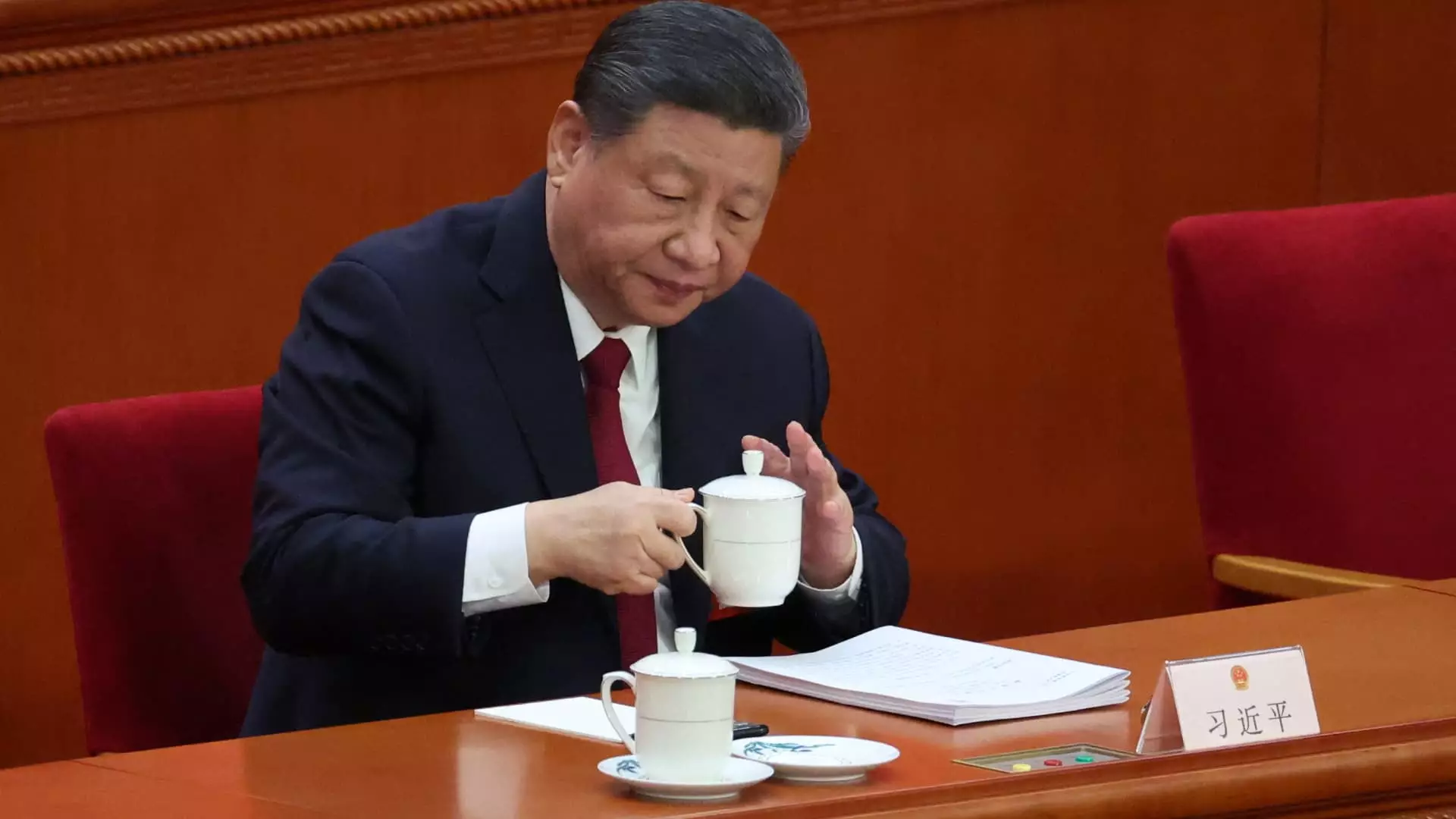China, once considered the unstoppable juggernaut of global economic growth, now finds itself grappling with a tide of external pressures that threaten its financial stability. As announced by President Xi Jinping after a recent Politburo meeting, targeted measures are being put in place to support struggling businesses amid increased “external shocks.” These external shocks, most notably the escalating tensions with the United States and the imposition of retaliatory tariffs exceeding 100%, have compelled the government to reevaluate its economic strategies.
According to major Wall Street banks, the forecast for China’s GDP growth has been revised downward, severely impacting the lofty goal of maintaining “around 5%” growth established only months prior. While ambitious economic targets have often characterized China’s governance, the current situation compellingly illustrates the fragility of such aspirations in the face of international hostility.
Political Theater or Real Action?
Despite the alarming economic indicators, the measures announced appear to be more cosmetic than foundational. The call for “multiple measures to help businesses in difficulty,” which encompasses financial support and adjustments to interest rates, seems less like a proactive strategy and more like an emergency response. The introduction of a revised deficit target, now standing at 4% of GDP, might suggest a readiness to spur fiscal action, but it raises questions about the sustainability of such an approach.
What is notably absent from the discussion is a bold departure from traditional policy frameworks. Instead of aggressively tackling the core issues, such as fostering innovation or diversifying trade relations, the government seems fixated on band-aid solutions that do not adequately account for the shifting global landscape. In the efforts to support domestic markets, it is crucial to evaluate whether these actions genuinely empower businesses or merely postpone inevitable consequences.
Middle-Class Uplift: A Palliative, Not a Panacea
In the wake of the meeting, authorities underscored the importance of raising the income of middle and lower-income groups as a means to stimulate consumption. While this approach appears commendable on the surface, it risks being a self-defeating prophecy if the government continues to sidestep underlying issues. The real challenge lies in creating an economic environment that promotes genuine growth rather than operating under the illusion of progress fueled by temporary measures.
If China wishes to navigate these tumultuous waters, it must understand that sustainable economic growth cannot thrive on the principles of protectionism or merely shifting market dynamics. Encouraging innovation, especially in burgeoning sectors like artificial intelligence, should take precedence over reactive policies.
The Private Sector: Signaling Change or Stagnation?
In light of the recent push for supporting the private sector, the anticipated new law from the National People’s Congress presents an opportunity for genuine economic reform. However, the devil is in the details. Are these initiatives simply a political tool to pacify dissenting voices or do they represent a shift towards a more liberal market economy?
Policymakers must recognize that the private sector is not only essential for economic growth but is also a vital source of resilience against adverse shocks. If the government merely pays lip service to private enterprises while upholding restrictive measures that stifle innovation and competition, it risks isolating itself from the global economy, further exacerbating existing issues.
Economics of Fear: The Need for a Coherent Strategy
The unease rippling through global markets in response to China’s economic policies reflects a larger narrative about confidence—confidence in China’s ability to bounce back, in its leadership’s capability to foster meaningful change, and in the private sector’s role in reviving the economy. The Politburo’s reluctance to deploy extensive stimulus measures signals a cautious approach, perhaps rooted in fear of repeating past mistakes.
Such an approach may soothe immediate concerns but allows for uncertainty to breed within the economic landscape. As policymakers tread lightly, the question remains: will they seize this moment to forge a coherent strategy that aligns with global economic realities, or will they continue to navigate through the shadows of indecision?
In a world rife with challenges, China’s path forward must prioritize adaptability, innovation, and the empowerment of its private sector, lest it finds itself further entrapped by the same external shocks that it seeks to mitigate.

